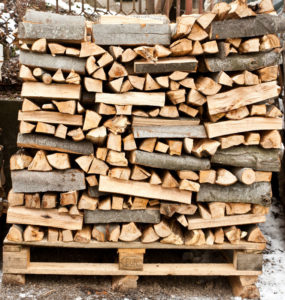Relaxing in front of a fire with friends and family is supposed to be an enjoyable way to unwind. Unfortunately, fireplace smoking and draft issues can make it impossible to enjoy a fire.
There is not one sole cause for fireplace smoking issues; there are a numbers of reasons why your fireplace may be smoking or not drafting correctly. Because of this, it is important to work with a CSIA certified chimney technician in order to identify the underlying cause of the smoking.
What is causing my smoking fireplace?
If burning a fire in your fireplace sends smoke back into your living room instead of up the chimney, you have a smoking problem. Unfortunately, finding the cause of a smoking fireplace may not be easy; there are as many as 15 different causing for smoking fireplaces and drafting issues. The following are some of the most common causes of smoking fireplaces.
- Flue blockages: One of the easiest to identify – and easiest to repair – causes of a smoking fireplace is a flue blockage. If the flue is partially or completely blocked, the chimney cannot correctly draft smoke from the fire up the chimney; this causes the smoke to blow back or settle in the room. Flue blockages are most commonly caused by debris such as sticks and leaves or from animal nesting materials. A working, well fitted chimney cap along with annual chimney inspections are the best ways to keep flue blockages from occurring.
- Using the wrong firewood: The kind of firewood you use can have an impact on how much smoke your fire produces. All firewood should be seasoned, or allowed to dry by exposure to the elements, for at least six months before burning. Doing this reduces the moisture content in the wood – and reduces how much smoke the logs produce. Likewise, choosing hardwoods such as ash, birch, or oak will produce less smoke than softwoods such as pines, firs, and spruces.
- Incorrectly sized flue: The size of the flue should correspond to the size and type of fireplace in order to draft effectively. A flue that is too large or too small can create smoking issues. This is often seen in homes where a new fireplace insert has been installed into an existing firebox; if the flue is too large, too much air will be pulled down into the chimney and smoke can be pushed back into the room. Likewise, a flue that is too small will not be able to draw smoke up into the chimney fast enough.
Negative air pressure: The height of your chimney can affect the air pressure around your home. Standard building codes require that chimneys must be at least two feet taller than any structures within a 10 foot radius. Nearby building, tall trees, overhanging branches, and second story home additions can all change the air pressure surrounding your chimney and lead to drafting problems.
Don’t let a smoking fireplace keep you from enjoying fires this fall and winter. Contact Jack Pixley Sweeps today to schedule an appointment and begin troubleshooting the cause of your smoking fireplace.
